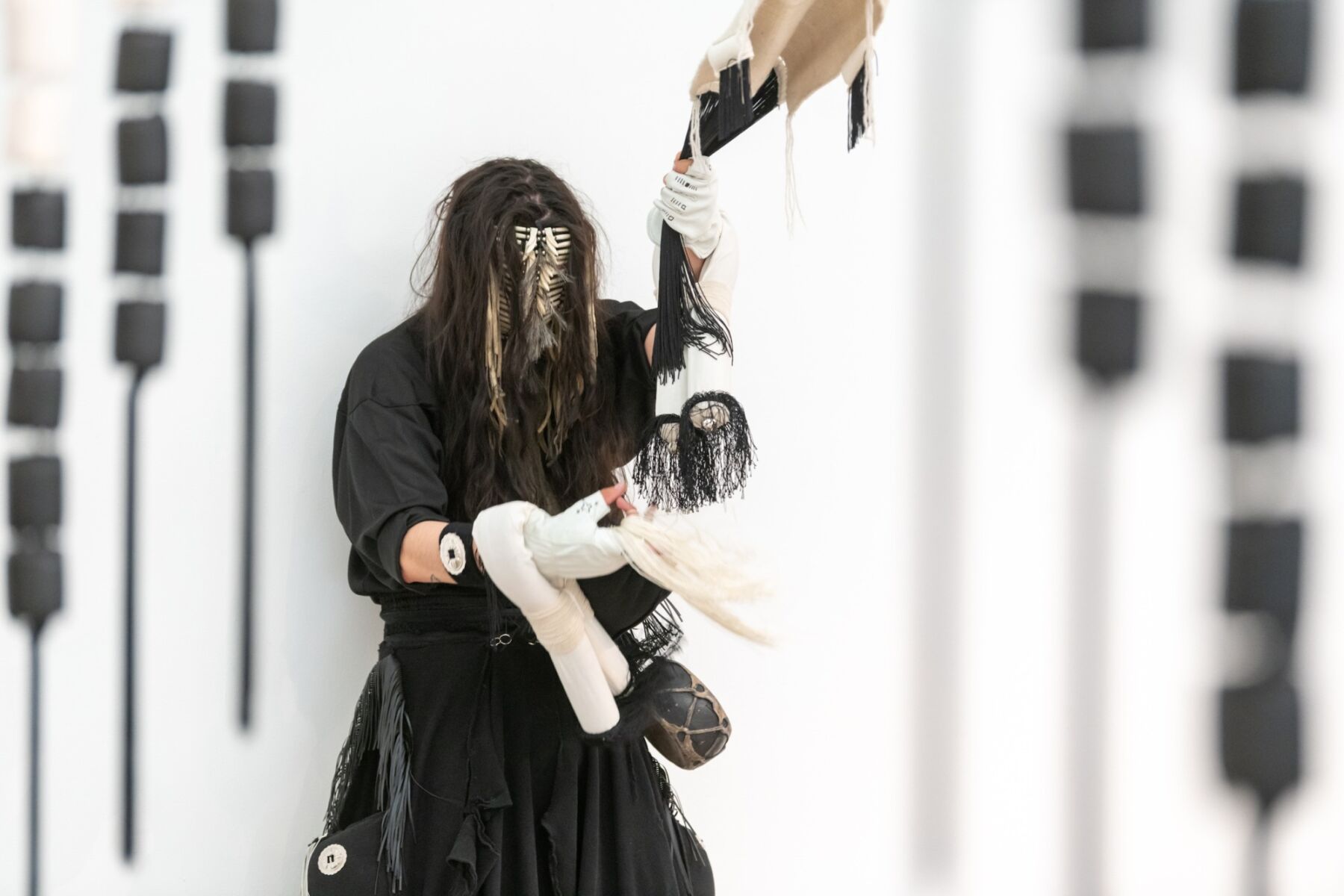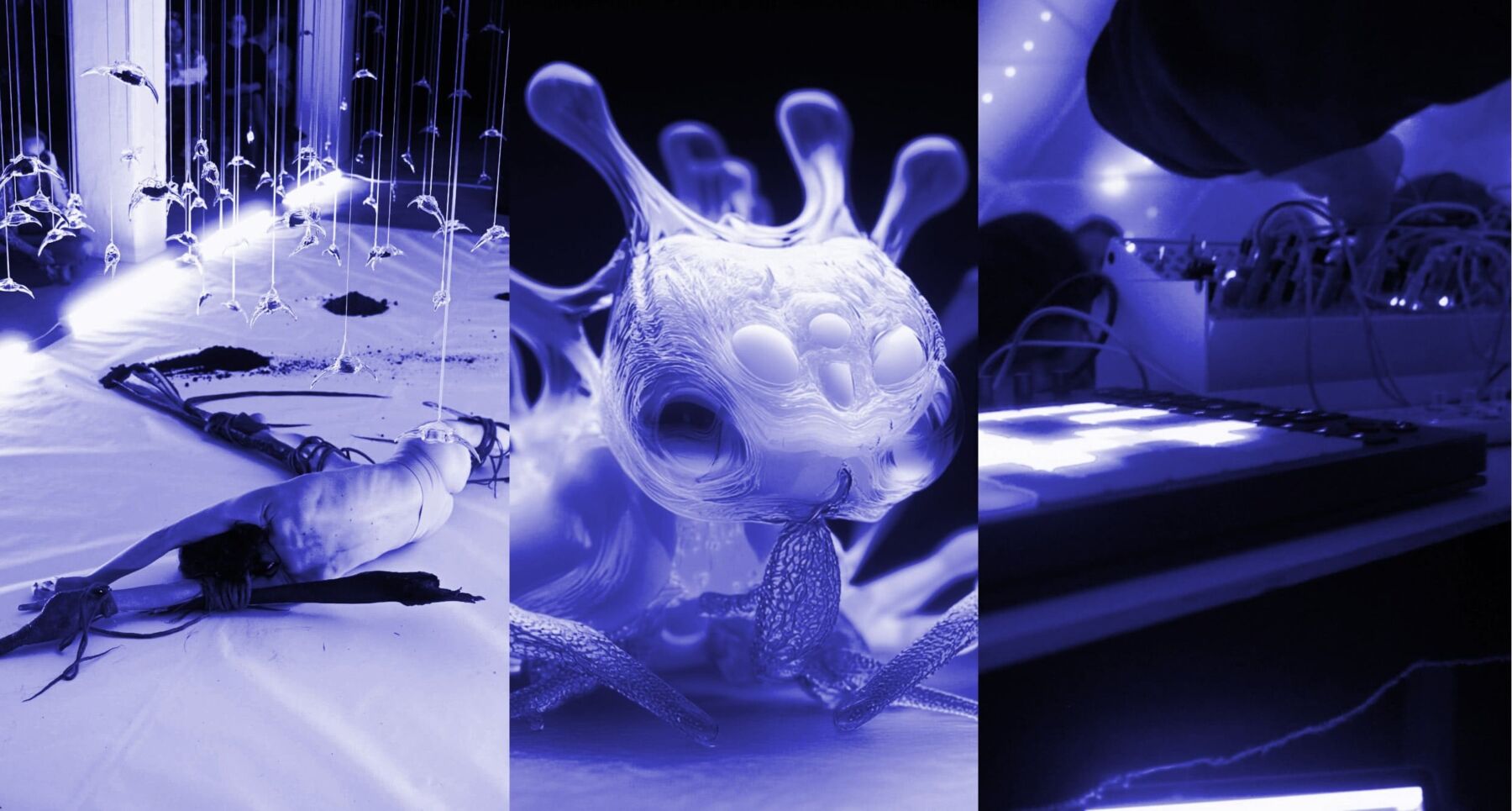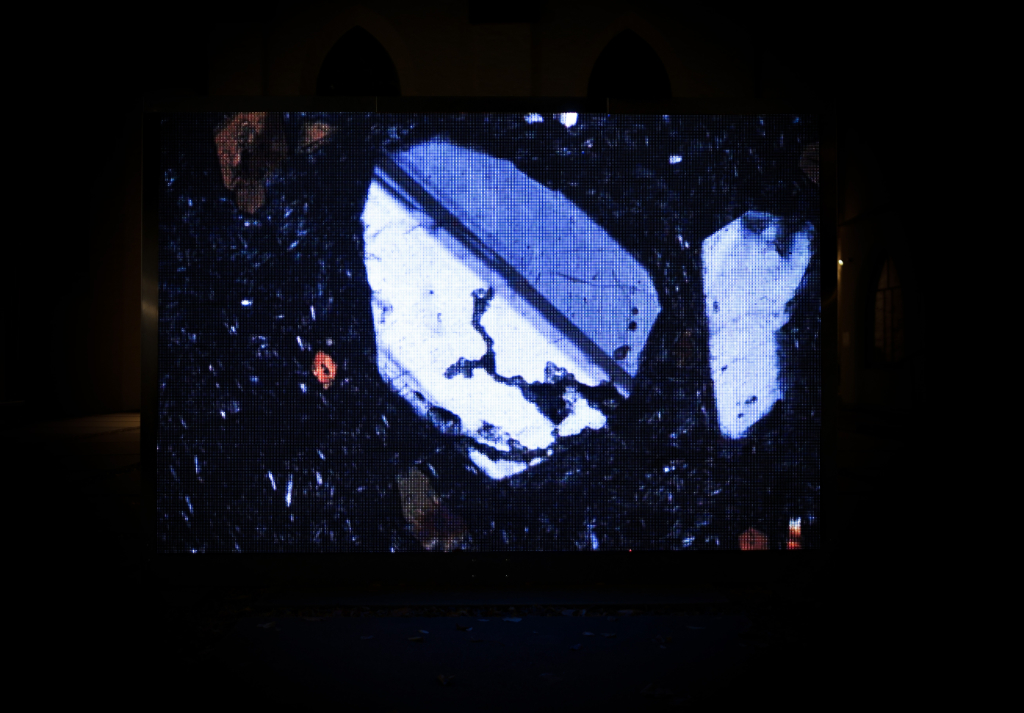Interview by Neshy Denton
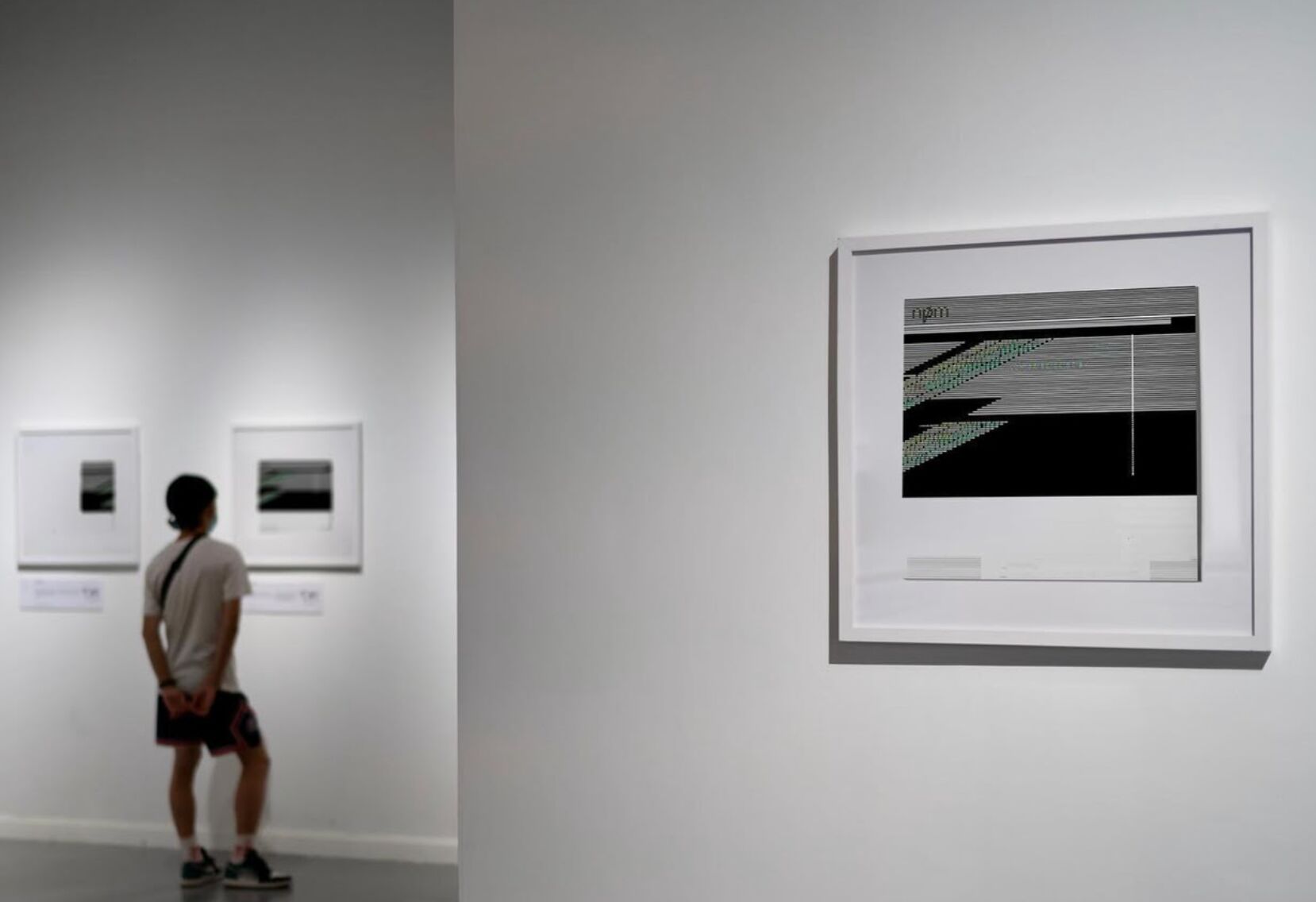
Risk is the possibility of loss, harm, or danger as the consequence of a certain action. It involves the feeling of uncertainty and the absence of the distinction between right and wrong. Whether it’s strategic, financial, or even personal risk, the idea of embracing the unknown to move forward is to some an essentiality. Beyond the potential of loss, it most likely will reward growth, discovery, and the most intricate ways to carve into innovation.
I wonder if there’s a way to describe the surrealist draw from the blurred code of ethics – between right and wrong in art’s language. The enigma is about understanding when the “wrong” in music became a shift in perception that started pushing structural boundaries to uncover the experimental side of sound. Whether altering the idea of time in a song, enhancing texture over melody, stripping to minimalistic drones or wiring the repetition into our meditative state. It’s almost like we move in circles – syncopation didn’t make sense either at the beginning of the 20th century.
As a master of embracing the strangeness in sound, Alex Piers – sound manipulator and npm label founder – created a homestead for ambient, techno and everything experimental through his label for this very notion specifically. Under the same patchwork, Piers brings together musical peers to reevaluate the significance of interacting with music. Not only does he want to approach the listening experience from a whole new angle via immersive experiences or live events like his InConcert. series on May 3, 2025, at EartH Theatre in London, but he reproaches the complacency of mainstream users and questions the idea of identity, standing by the importance of risk in the innovation and spanning evolution of music.
Piers put the idea together in 2019 in Guilford, UK. Prioritising sonic exploration over the aesthetic, he recruits artists through genuine connections. A mutual artistic craving builds the trust needed for collaboration, and he chooses to work with those who, like him, seek to explore new perspectives to reimagine ambient and explore further in electronic music.
Some of those artists include DEFTR, the collaborative project between Answer Code Request and Jan Wagner. Their work blends the expansiveness of ambient, the kinetic pulse of techno – while often stepping outside the 4/4 grid – and the precision of classical composition to build textured sonic spaces. Another on board is Orlando Voorn, pushing techno into experimental realms by fusing analog and digital techniques, often shaping tracks around his current state of mind, resulting in deeply authentic work. Then there’s John Beltran, who continues to reinterpret his signature Detroit house sound through ambient’s contemplative lens, keeping on good terms with the visual and emotional depth that defines his work.
In an industry contaminated by gimmicks, creative authenticity has declined into a rare artifact. So, the idea of tuning into a community where stimuli overrides success is what fully moulded npm label’s dutiful mission. It all started in 2019 when Alex Piers launched npm as a way to build a space for music that didn’t quite fit anywhere else. What began as a personal project quickly became a platform for the not-so-all and sundry. We caught up with Alex to talk about how it came together, what drives his approach, and why risk still plays a central role in the success of the npm label.
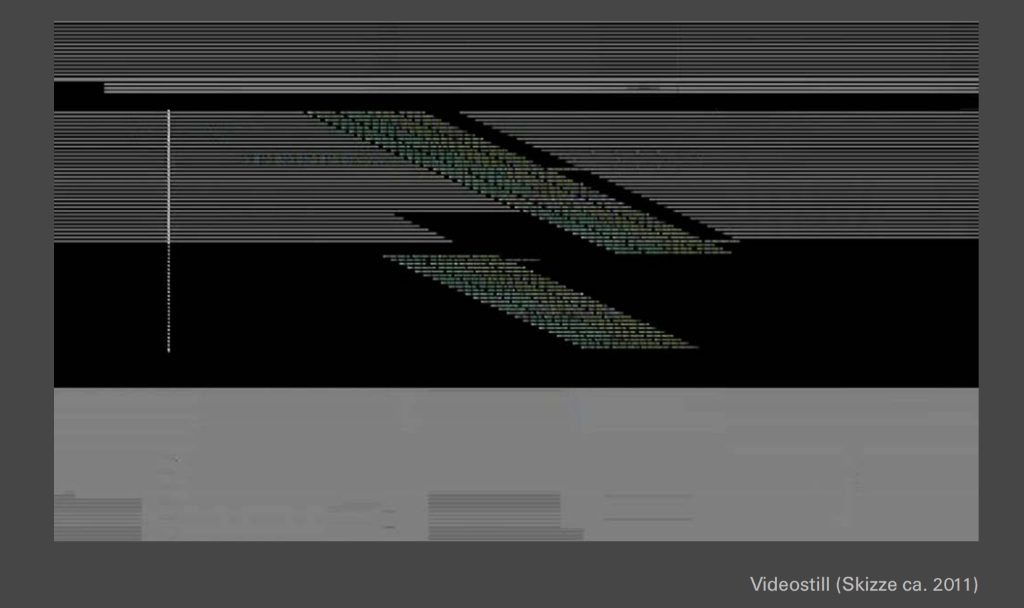
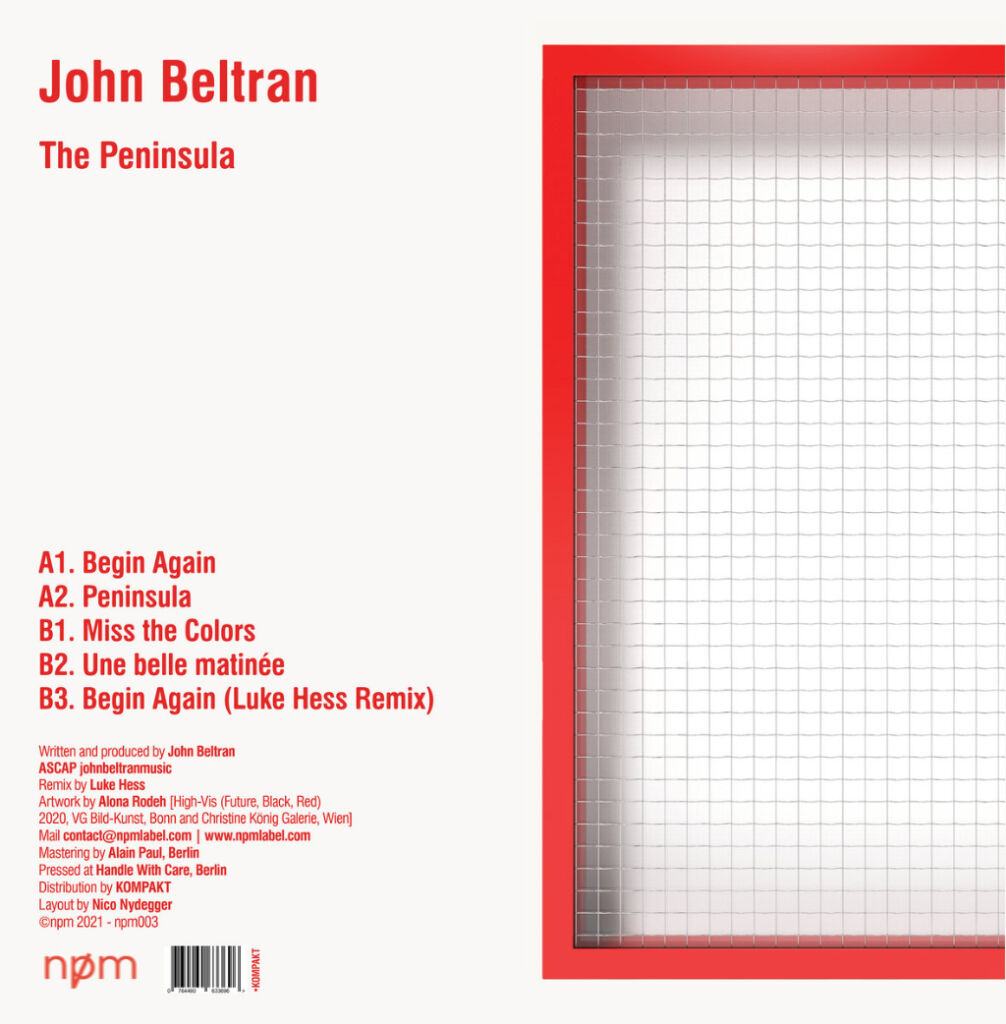
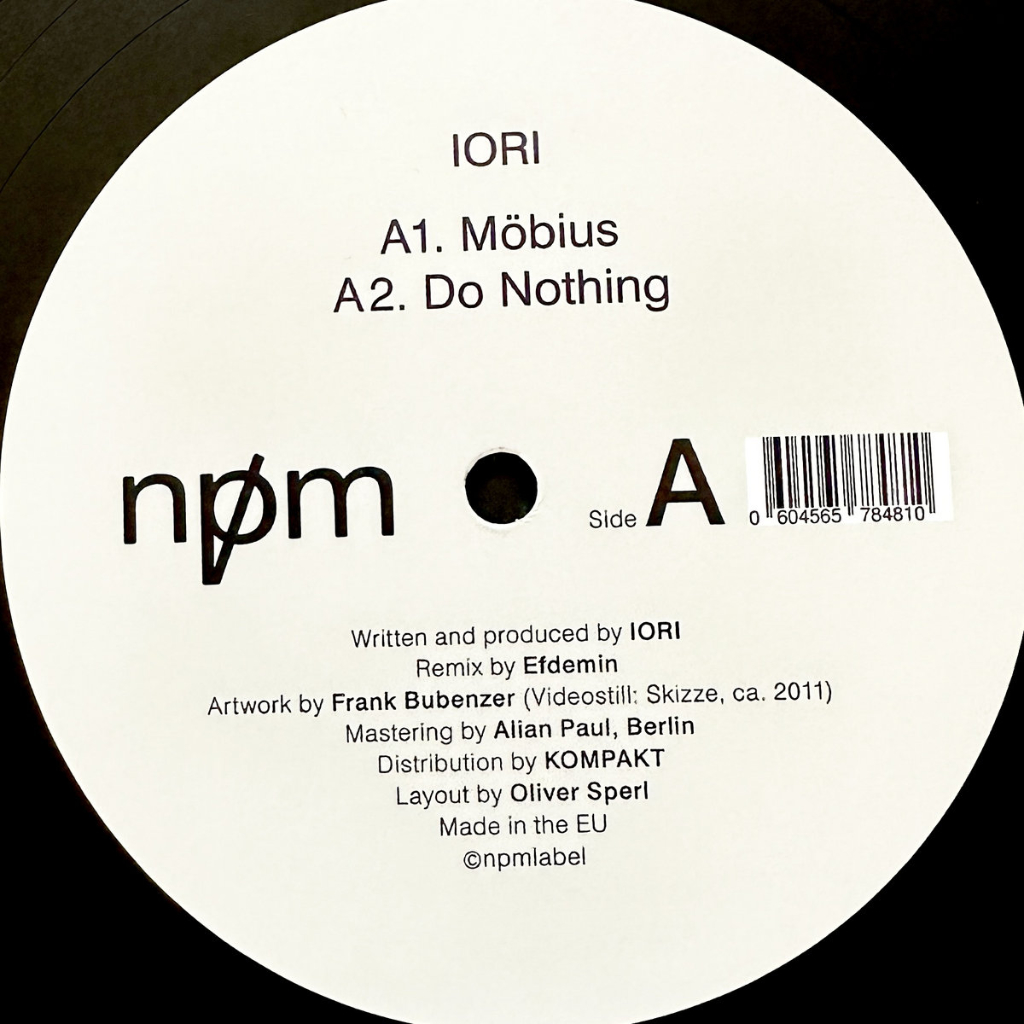
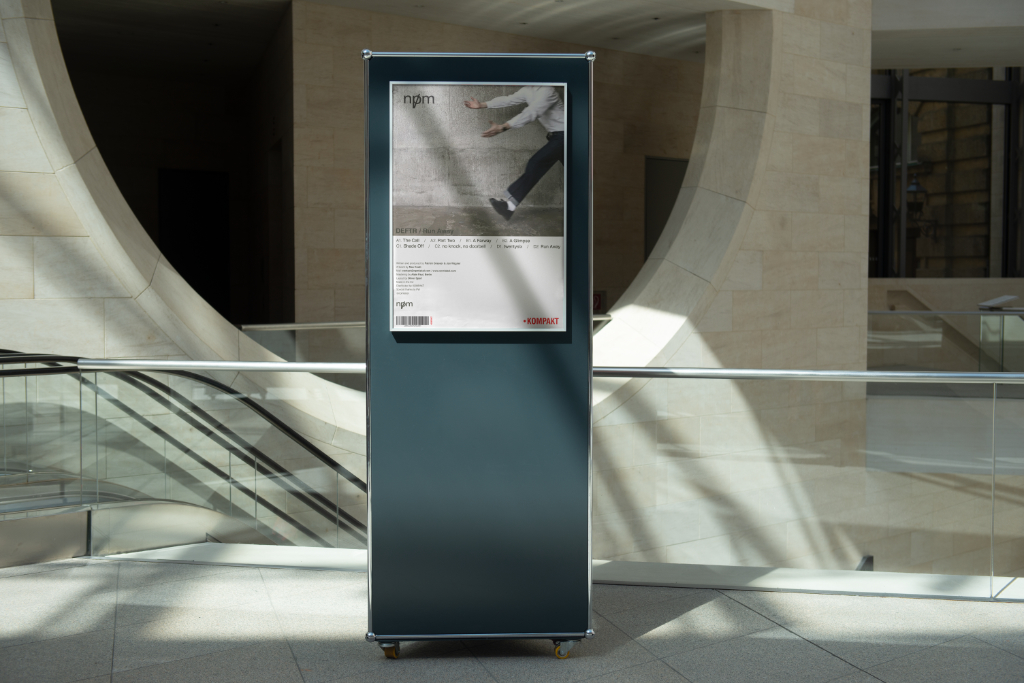
First, please walk me through why and how you started the label. Before making it a reality, what vision did you have for npm?
Starting npm was a process that came out of a bit of an identity crisis, honestly. I had always loved a wide range of genres, but I struggled with the idea of releasing my music under my name. I think there was this pressure to stick to a specific sound or image, and I didn’t want to be pigeonholed into any particular genre. I didn’t want to limit myself or the music I was creating. I felt uncomfortable releasing it under my name because it felt too tied to a specific identity or expectation.
I wanted to create a platform where I could release music that was true to my tastes across various genres without worrying about fitting into a specific box. I had this strong urge to keep things underground—real, raw, and without commercial constraints. So, the idea behind npm was to provide an outlet for artists who felt similarly, who weren’t interested in following trends or succumbing to the pressures of mainstream success.
I also wanted to create something that was about diversity, not just in terms of sound but also in how music could be presented and experienced. My aim was never to release the same kind of music you hear from other labels repeatedly. I was passionate about showcasing a variety of styles within the underground scene—ambient, techno, experimental, etc. It was very important to me that the label reflected my journey as a listener.
I’ve always been drawn to surrealism and the strange, abstract aspects of art. There’s something about the unconventional beauty in that style that resonates with me. I knew I wanted that to play a big part in npm, to reflect the label’s vibe and aesthetic. For me, there’s a certain allure in the weird and the unexpected, which is why I’ve wanted to embrace that from the start.
When I visit my family in Cornwall, I usually visit the Tate in St. Ives. I’ll walk around the galleries, listening to ambient music. It’s hard to describe, but something about it just hits differently — it’s like the combination of the art and the music creates this unique experience. It’s a personal space where the strange and the beautiful meet, and that’s exactly the kind of feeling I want to bring into npm.
From the start, I also envisioned npm hosting events that were different from the usual. Of course, I wanted to do club nights, but I also wanted to create something like InConcert. events that are more focused on the music itself. These would be experiences where people can come and dive into how the music is made, focusing purely on the art and the performance, not on drinking, taking photos, etc. It’s about attracting true music enthusiasts who want to experience the full, unfiltered live music. You get these environments for classical music or other genres, but you rarely get that in ambient music. That’s something I want npm to offer—an immersive space for ambient music where the audience can fully experience it without distractions.
Six years in, what have been the defining moments that shaped npm’s identity? Have there been any moments where you’ve had to rethink your approach completely?
Has it been six years?? Wow, there have definitely been some defining moments that have shaped the label’s identity and solidified the direction it’s heading in. One of the most significant moments was the recent album release—it was a real turning point for the label. It marked a new chapter in terms of the music we were putting out and helped reinforce the kind of artistry npm represents. The release was a milestone, both in terms of the music and how we could share it with the world. Seeing the reception and how it connected with people solidified my belief in the vision for the label. Working with Jan and Patrick (Answer Code Request) on that project was great, and I appreciated their trust in me to help release it.
Another key moment came early on when I first launched npm, and it was more of a realisation than a specific event. I remember feeling quite optimistic about how quickly the label would take off, thinking it would gain momentum faster than it did. I had to learn the hard way that building something meaningful, especially in the underground scene, takes time. It was a humbling experience, but also taught me the value of patience and staying true to the long-term vision.
One of the biggest challenges I’ve faced—and one that made me rethink my approach—has been how music is released today. The cost of putting out music has skyrocketed, especially with the growing expense of production, promotion, and distribution. It’s been difficult to navigate, and at times, it’s forced me to reevaluate how we release music at npm. You have to be strategic and creative with how you approach everything, from funding to marketing, to keep the integrity of the label intact without compromising its goals.
The financial side of running a label can sometimes overshadow the creative process, but it’s a necessary part of the journey, and it’s something that’s pushed me to think outside the box and find new ways to adapt while staying true to the values of npm. I’ve never wanted to shove the label in people’s faces or pressure them to follow or buy. That’s not my style, and I’ve never been about that. I know we live in a world where everything is so saturated, and you have to do what you can to stay visible, but I’ve always felt that this approach comes across as desperate. People who genuinely connect with what you’re doing will follow your work regardless.
I read a lot about how record labels get a bad rep for how they treat artists and often take advantage of them, some of which is true in certain cases. But I also want to shed light on the reality of how much it costs to release music these days—particularly vinyl. The costs of production, promotion, and distribution can be overwhelming. For example, the most recent album release cost thousands, and the label won’t see anywhere near that back. The entire npm catalogue averages about £15 in streaming per month; that’s just about enough to pay for Soundcloud Pro, not enough to pay for our website subscription.
The label hasn’t made a profit; all the money goes back to funding more releases, events, and other label-related activities. I’m fortunate to have other income sources to put into the label to keep it running, but it wouldn’t exist without that support. The financial strain is real, and it’s a struggle to keep going, but I believe in the vision and the music, which drives me to continue.
Does npm operate with a guiding ethos when choosing which artists to work with? What makes a project feel right for the label?
Great question. I’d say yes and no. There is a guiding ethos when choosing artists to work with, but it’s not always something that can be easily put into words. I think submitting a demo is a bit like applying for a job—it’s about seeing if there’s a mutual fit between the artist and the label. It’s not just about the quality of the music but also about whether the artist’s sound and vision align with the values of npm.
What makes a project feel right is authenticity. I’m drawn to artists who stay true to their craft and aren’t just chasing trends or commercial success. I want to work with people focused on the art, not just the outcome. It’s also about working with like-minded individuals who share the same values—people who are passionate about creating something real and unique. Ultimately, it’s about finding artists who bring something fresh to the table and whose sound resonates with npm’s underground ethos. When there’s that mutual understanding and respect for the music, that’s when a project feels right for the label.
I’ve always learnt to appreciate music, art, and concepts in their purest form—finding their essence in sensations. Your label feels like a space that challenges musical norms and constantly explores new dimensions to allocate sound. Is that an intentional approach, or do you see it differently?
That’s an interesting question, and I would say it’s something that has naturally evolved over time rather than being a fully planned, intentional approach from the start. From the beginning, I’ve wanted npm to be a space where music and art go hand in hand—where the sound and the visuals work together to create a complete experience.
I’ve always believed that music isn’t just about sound but also about sensation, feeling, and atmosphere. The artwork isn’t just an afterthought; it’s an integral part of how the music is presented. It has to help drive the music forward and complement its essence but also stand out enough to capture the listener’s attention.
In many ways, the label’s approach to sound has always been about exploring new spaces—whether through the music itself or the way it’s presented. I want npm to feel like a place where artists are free to experiment, take risks, and not be confined by traditional expectations. Over time, it’s become clear that this sense of exploration and pushing boundaries has become a core part of the label’s identity, which I’m proud of.
How would you describe yourself as an artist, and what is your background, separate from your role as a label founder?
Honestly, it’s something I’ve struggled with a lot myself. I don’t even fully know how to describe myself as an artist. If I had to pick one word, I’d probably say ‘chaotic’—but that’s said half-jokingly. There’s always been a sense of disarray in my creative process, which I’ve been working on understanding. I’ve always had a complex relationship with music and creating art. I’ll admit that it’s often been hard for me to finish a piece of music or feel like I’ve fully captured what I set out to express. That struggle has impacted my mental health at times.
One of the things I’ve been working on is learning to create and release music because I want to. For a long time, I was very concerned about how my music would be perceived, making it harder to move forward with projects. I think that’s something many artists experience—the tension between creating for yourself and worrying about others’ expectations.
Growing up, I had a different musical start. I played the flute for quite a few years, starting at a young age. I enjoyed it, and it gave me a solid foundation in music, even though I eventually veered off into other directions. The classical side of things gave me an appreciation for structure and discipline, but over time, I gravitated more toward electronic and experimental music. I still love classical music, FYI.
Ultimately, my background as an artist is still evolving. I’m still figuring out how to embrace my own creativity without overthinking it, and I think that’s an ongoing journey. I’ve always wanted to push boundaries and explore new sounds, but it’s taken me time to feel confident in my own voice as an artist—outside of just being a label founder.
Have any strange or unexpected musical influences shaped your approach?
I grew up listening to many ’80s rock music, mainly because that’s what my parents were into. We used to listen to cassettes and CDs on repeat, especially during long road trips, since most of my family lived in Cornwall at the time. These drives would often last 5+ hours, and the music would play over and over again. Interestingly, I never really paid attention to the lyrics. What captivated me were the instruments and the melodies in the background. That’s what I always used to focus on, and even to this day, that aspect of music grabs my attention.
I didn’t get into dance music until I was around 9, probably, and it came from video games. The soundtracks from those games introduced me to a lot of electronic elements. Similarly, ambient music unexpectedly came into my life. I remember hearing Brian Eno’s An Ending (Ascent), and it was like discovering an entirely new style of music. It was the first piece of ambient music I ever heard, and it resonated with me. I first encountered it in Danny Boyle’s 28 Days Later when I was about 14. Combining those early influences, from rock to electronic to ambient, has shaped my approach to sound.
The landscape of electronic music is shifting, with changes in listening habits, platforms, and even the physical spaces that house these sounds. Where do you see ambient and experimental electronic music evolve in the next decade?
The music landscape is constantly evolving, and trends can quickly dominate with social media. Whatever genre gains traction often becomes the focus, and right now, ambient music is having more of a moment. Over the past few years, I’ve noticed that even mainstream artists—many primarily known for house or techno—are starting to include ambient versions or edits of their tracks in their new releases. I can’t help but wonder if they’re genuinely incorporating ambient music because they appreciate it or if it’s more about jumping on the bandwagon due to its growing popularity.
As we move forward, the evolution of ambient and experimental electronic music will be closely tied to technological advancements, especially with the rise of AI and new plugins. Who knows where that might lead? It’s a bit of a wild card.
On a more personal note, it’s always been difficult to explain to people who don’t understand or appreciate ambient music what it’s truly about and how it all came to be. Understanding the genre, its intention, and the emotional depth it can carry often gets overlooked in a fast-paced, trend-driven industry. But I think that as people seek more immersive and introspective experiences, there will always be a space for ambient and experimental sounds to evolve and grow.
With so much music being algorithmically pushed to audiences, has the way people discover and connect with electronic and ambient music changed?
100%, it’s definitely changed. I don’t know if that’s good or bad, though. On one hand, having algorithms pushing music to people has made it easier for listeners to discover new tracks or artists they wouldn’t have found otherwise. It’s kind of wild to think how, years ago, you had to dig deep to find something new, but now it can just show up on your feed, which makes music more accessible in a lot of ways.
But on the other hand, it’s created this kind of fast-food culture around music—where people consume it quickly without fully engaging with it. There’s less of an emphasis on the process of discovery or truly connecting with a track. It’s all about what’s trending and what’s being pushed to you, and the algorithms often prioritise what’s already popular, so sometimes, the lesser-known or more experimental music can get buried.
For electronic and ambient music, it’s a little trickier. These genres often require more attention, time, and listening for someone to get it fully. They benefit from a deeper connection—whether through an immersive live experience or just spending time with a track in the right environment. But with algorithms pushing music to listeners in bite-sized pieces, how people connect with something as intricate as ambient or experimental electronic music has changed. It’s harder for the music to find the right audience when it’s just being fed to the masses without context.
So yeah, it’s a double-edged sword. It’s amazing in some ways for exposure. Still, how we engage with music has also shifted, and I’m not sure that’s always a positive change, especially for more niche or slower atmospheric genres like ambient.
Repetition is a core element in ambient and electronic music, yet these genres often resist traditional structure. Ambient and electronic music can be meditative, disruptive or even transcendental. When you listen to or create music, what role do you feel repetition plays – not just in sound, but in how we experience it in time and emotion?
Repetition is a key element in ambient and electronic music, and it plays a significant role in how we experience sound, time, and emotion. For me, repetition creates a meditative space where the listener can settle into the music. It gives you the time to reflect, feel, and connect with the sound on a deeper level, like the music becomes a tool for introspection.
In genres like 4/4 techno or ambient, when people don’t understand the music, they might dismiss it as ‘just noise.’ But the beauty of repetition is that it invites you to focus on different elements of the track—the subtle changes in sound, the layers of instruments, the shifts in texture. It’s pretty hypnotic, allowing you to tune into specific details and let the music unfold slowly.
At the same time, repetition can be disruptive—it can create tension, especially when a sound or pattern loops in a way that challenges the listener’s expectations. That tension invites you to listen more closely and engage with the music differently. Ultimately, repetition in these genres allows time to stretch and feel more fluid, inviting listeners to experience the music as a sequence of notes and an emotional and reflective journey.
By the way, Soa is sitting comfortably in a few of my playlists. Could you tell me about this song?
Soa is a track I created around 2017, and the initial chord progression came together quite quickly—maybe in about 20 minutes, though it’s all a bit hazy now. The main sound, which I’d describe as a kind of choir, came from a free plugin I found, and unfortunately, I can’t remember its specifics. Honestly, that whole period of making the track is a blur, as I was going through something personal at the time. And I guess, like many musicians and artists say, the music reflects how I felt then.
It was too repetitive when I first wrote the track, and I wasn’t sure if people would connect with it. I needed to add more layers or elements to make it more dynamic. I left it for a while—about a year, I think—and when I came back to it, I realised that the simplicity was perfect. It was beautiful in its way, and I didn’t need to overcomplicate it. The timing of the release was really important to me. When the war in Ukraine broke out, I felt compelled to release it with all proceeds going to the Ukraine Humanitarian Appeal. It felt like the right moment, and I wanted to contribute somehow along with the label.
I also received an email from Loewe, the fashion brand, asking if they could use the track for one of their fashion shows. At first, I genuinely thought it was a scam—as it was so out of the blue. But when I realised they were serious, it was a very surreal moment. It’s been incredible to see how the track has been received, and it’s humbling to know that something I created during a difficult time resonated with so many people.
I do hope to release it on vinyl one day. There’s something special about having a physical version of it, and I’d love for people to experience it in that format, especially considering how much it’s meant to me and how others have embraced it. It’s also the one track I’ve produced that I can genuinely say I’m truly proud of. And thank you for having it featured in your playlists—it means a lot to me.
What track or album completely changed your thoughts about music?
Many albums have shaped the way I think about music, and even more recently, I’ve come across a few that have made me rethink how I approach sound. But if I had to point to the first album that changed everything for me, I’d have to say it was the soundtrack from Midnight Club 2—the video game. It was the first time I heard such a diverse range of dance genres, and there was even music that I now recognise as ambient.
At the time, though, I didn’t have the vocabulary to identify it as ambient. I just knew it felt different and impactful. The main menu music, for example, was ambient in nature, but as a 9-year-old, I didn’t fully grasp what that was. That soundtrack was a real eye-opener for me. It’s funny how music connects the most when it reminds you of a specific time or place, and I think that album was one of the key moments where I realised how powerful music could be in evoking memories and emotions.
Another key moment came when I discovered An Ending (Ascent) from Brian Eno’s Apollo: Atmospheres and Soundtracks. I’d say that track was a significant turning point in how I approached ambient music. It was the first time I understood the depth and emotional pull of repetition and atmosphere in music. It taught me how repetition can create space for introspection and how music can transcend traditional structure to become an experience.
If I had to name a few more albums that have had a lasting impact on me, they would include Craig Armstrong’s The Space Between Us, a masterpiece of atmospheric, cinematic music. The depth and emotion in that album made me think differently about composition and soundscapes. Another one is Andy Stott’s Merciless. It’s a brilliant example of how to create tension and atmosphere in electronic music, and it opened my eyes to how you can manipulate sound to create mood and narrative. Lastly, Würden by Ortlos is another album that profoundly influenced me. It’s a perfect example of experimental sounds blending with a deep, immersive vibe, and it helped me appreciate the subtle intricacies of ambient and experimental music.
Each of these albums pushed me to think outside the box and showed me how much power music has to create emotion, tell stories, and connect with listeners in ways I hadn’t fully understood before.



